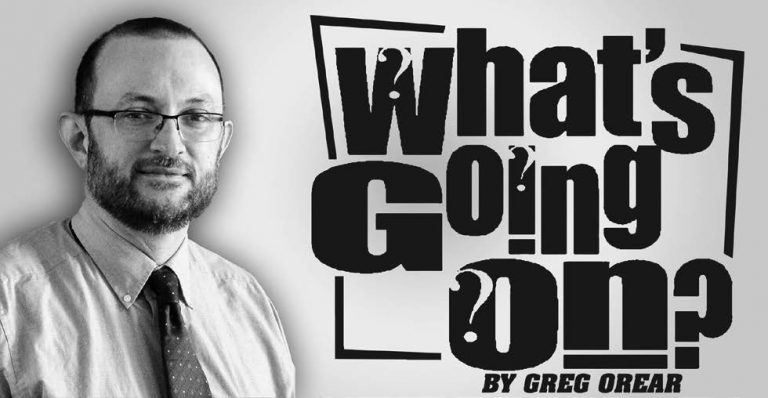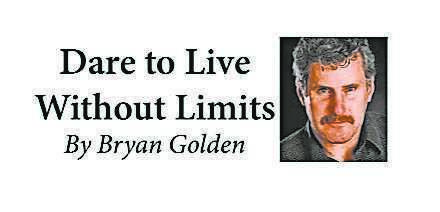Why newspapers aren't so black and white

I’ll admit, when it comes to the English language, I have some pet peeves that extend far beyond what is considered grammatically correct.
I wince anytime I see or hear the word “snuck.” I blame my high school composition teacher who ingrained in our heads the word “snuck” is defined as vomiting through your nose.
“I sneaked up on someone and startled them, causing them to snuck coca-cola” was the working example she provided and seared into her student’s minds.
Another one that silently grates my nerves is when I hear ironic misused. It’s frequently substituted for coincidence, even though they don’t mean the same thing.
Walking outside on a cold day and remarking “wow, I’m sweating bullets over here,” would be ironic as it’s the opposite of what you would expect. If someone else said the same thing the day before, it’s coincidental.
In that sense, newspapers are a great working example of irony.
You’ve heard the joke before: What’s black and white and read all over? A newspaper.
With printing developments allowing for more color to be added to newspapers, the joke doesn’t ring as true as when I started my career in 1993 and color pictures were unheard of in smaller markets. But historically speaking, newspapers are known as being black and white.
Which again, is ironic, because when it comes to producing one, it’s anything but black and white.
One of the things I love about working at a newspaper is the ambiguity, the shades of grey, the absence of black and white.
If I go buy a chainsaw, truck, cell phone or even a microwave dinner, I’m going to be provided instructions of some sort in how to use that item.
Even with businesses, there’s a handbook and list of rules every bank has to follow, or restaurant in terms of safety measures, or even a radio station in which the FCC will provide a list of words you can and can’t say on the air.
But a newspaper? Nope. You buy one of those and the only manual or how-to book you’ll get related to its operation will be rules mandated for all businesses to follow.
And curiously, if you get a room of 10 newspaper editors, publishers, managers, or whatever and ask them how to handle a specific issue, problem, scenario or story, you’re likely to get 6-7 different answers.
While I won’t claim to confront those situations on a daily basis, it’s more common than you think.
For example, this week I was severely torn about whether or not to use a photograph of a victim of a dog attack. You can read about it on the front page, but you won’t see the picture that has been widely circulated on Facebook and by other media.
It’s a gruesome photo of a six-year-old girl laying on a hospital bed, waiting for treatment of her wounds. The parents provided the photo and without their consent, I never would have even considered it. But they want to bring attention to what happened to their daughter in an effort to make sure it doesn’t happen again, not only to her, but anyone.
For those reasons, and because this is a problem that should make us uncomfortable, I strongly considered running it.
But maybe it’s because I have two daughters close to that age, or because I’m too conservative or biased otherwise, I had hesitated. The photo simply bothered me in an indescribable way.
So I did what I typically do when confronted with a situation like this. With no manual, I asked colleagues I respected and whose judgment I trust to provide insight.
Each of them responded similarly: I can see why to run it, but I wouldn’t, confirming my concerns.
At the same time though, I know others who would and have run the photo. And that’s fine for them. At the end of the day, they will answer to their readers and themselves.
And that’s part of the beauty of newspapers: each editor has their unique perspective impacting their decisions.
I know several editors who avoid controversial stories, especially involving public officials. You won’t see in their paper a story about a police officer with “only” two DWI charges, or a series on illegally-elected government officials who owe back taxes.
I’m not one of those editors.
Much as the assistant prosecuting attorney John Krehmeyer said during Mike Merkel’s bond hearing Wednesday, I expect and hold public officials to a higher standard. My rule of thumb is if taxpayers pay your salary, whether a police officer, teacher, or elected official, you forfeit some right to privacy and are consequently, more accountable than someone who works in the private sector.
The public places a great deal of trust in these types of officials. And if they do something to violate that trust in an official capacity, or somehow diminishes their ability to do their job, I think the public needs to know.
Anything less from a NEWSpaper, in my opinion, would be ironic.
Gregory Orear is the General Manager/Editor of the Lincoln County Journal, Troy Free Press and Elsberry Democrat. His children may roll their eyes every time he corrects their English, but they are still learning when to use “I” instead of “me.” He can be contacted at gorear@cherryroad.com.



